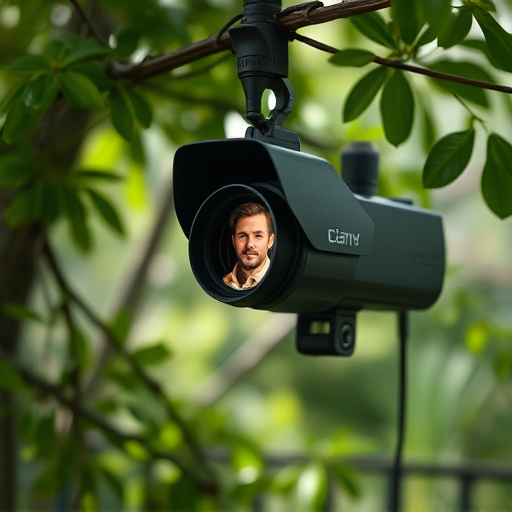Wireless Night Vision Security Cameras Indoors leverage radio frequency (RF) technology for long-range video transmission and low-light imaging via infrared LEDs. These cameras, with central hubs for real-time streaming and storage, offer motion detection, two-way audio, and cloud storage. Detecting these hidden cameras involves understanding the RF spectrum and using specialized tools to identify signals; techniques include sweeping with detectors and signal analysis. Prevention strategies encompass regular inspections, RF detection tools, physical barriers like shielding film, security patches, motion sensors, smart alarms, and strict access control lists.
Uncover the insidious world of hidden cameras with our comprehensive guide on detecting Wireless Night Vision Security Cameras indoors. Understanding how these devices operate is key to safeguarding your privacy. We explore the RF spectrum, providing insights into identifying signals and the tools needed for detection. Learn effective strategies to prevent and secure against clandestine surveillance in indoor environments, ensuring peace of mind in your personal or professional spaces.
- Understanding Wireless Night Vision Security Cameras Indoors
- The Radio Frequency (RF) Spectrum and Hidden Cameras
- Detecting RF Signals: Tools and Techniques
- Preventing and Securing Against Hidden Cameras in Indoor Spaces
Understanding Wireless Night Vision Security Cameras Indoors
Wireless Night Vision Security Cameras Indoors have become a popular choice for homeowners and businesses seeking enhanced security measures. These cameras operate on radio frequency (RF) technology, allowing them to transmit video footage wirelessly over long distances, even in complete darkness. By utilizing infrared LED lights, they can capture clear images in low-light conditions, making them ideal for indoor spaces where traditional wire-based cameras might struggle.
Understanding how these wireless systems work is crucial for effective deployment. Most interior camera setups employ a central hub or receiver that connects to your network, enabling real-time video streaming and storage. This technology offers convenience and flexibility, as it eliminates the need for complex wiring and allows remote access from anywhere with an internet connection. Moreover, many modern indoor security cameras feature advanced features like motion detection, two-way audio, and cloud storage, enhancing their functionality and appeal.
The Radio Frequency (RF) Spectrum and Hidden Cameras
The Radio Frequency (RF) Spectrum plays a pivotal role in understanding and detecting hidden cameras, especially those used for wireless night vision security cameras indoors. This vast array of frequencies is a fundamental aspect of modern technology, enabling communication and data transfer across various devices. In the context of security cameras, RF signals can be both a tool and a threat—a double-edged sword.
Hidden cameras, often surreptitiously installed, rely on wireless connections to transmit footage secretly. They utilize specific radio frequencies to establish a network and communicate with remote viewers or storage devices. This makes detecting them unique compared to traditional surveillance methods. By understanding the RF spectrum and its interactions with such devices, individuals can employ specialized tools to identify and locate hidden cameras, ensuring privacy and security in indoor spaces equipped with wireless night vision security cameras.
Detecting RF Signals: Tools and Techniques
Detecting RF signals is a crucial aspect of identifying hidden wireless night vision security cameras indoors. Tools like RF detectors and signal analyzers play a pivotal role in this process. These devices are designed to scan through walls and other obstacles, picking up on radio frequency emissions that may indicate the presence of a hidden camera. Advanced models can even differentiate between various types of signals, helping users pinpoint specific devices.
Techniques for detection include sweeping the area with the RF detector, paying close attention to any consistent or anomalous readings. Some professionals also employ signal jamming as a secondary method, temporarily disabling all wireless signals to observe any subsequent changes that could indicate the presence of a hidden camera. This approach requires careful execution, however, as it can be illegal in certain jurisdictions and may disrupt other electronic devices nearby.
Preventing and Securing Against Hidden Cameras in Indoor Spaces
Preventing hidden cameras in indoor spaces is a growing concern, especially with advancements in technology making it easier to deploy wireless night vision security cameras. To secure against these devices, a multi-layered approach is essential. Start by conducting regular visual inspections of high-risk areas like corners, ceilings, and behind furniture. Use specialized tools designed to detect RF signals, as hidden cameras often transmit data via radio frequency waves.
Implementing physical barriers like RF shielding film on windows and doors can also help block signals from entering or exiting rooms. Additionally, keep your wireless devices updated with the latest security patches. Employ motion sensors and smart alarms that alert you when unusual activity is detected, making it harder for hidden cameras to operate undetected. Regularly review access control lists and ensure only authorized personnel have entry permissions.
Wireless Night Vision Security Cameras Indoors offer advanced surveillance capabilities, but they also present unique challenges. Understanding the RF spectrum and employing effective detection techniques are crucial steps in securing indoor spaces from hidden cameras. By staying informed about the latest tools and trends in RF signal detection, homeowners and businesses can protect their privacy and create a safer environment. Preventive measures, such as regular checks for unauthorized devices and the use of shielding technologies, further reinforce security against these subtle threats.
